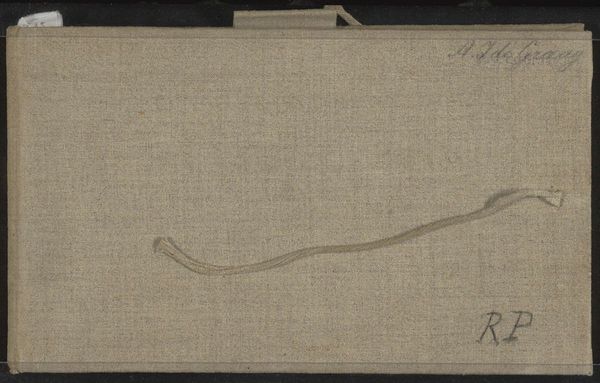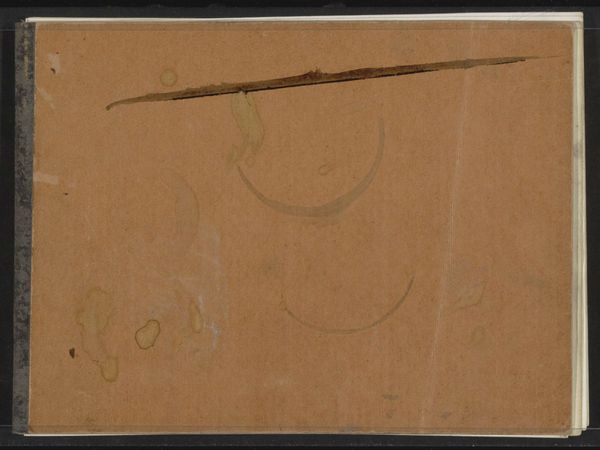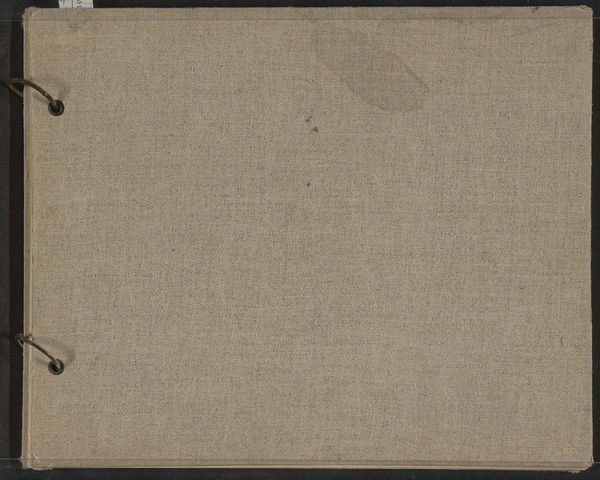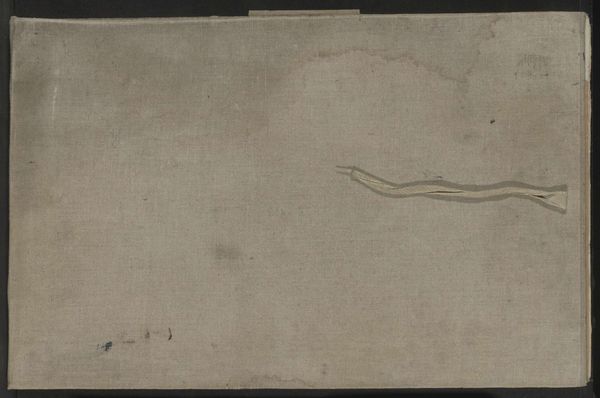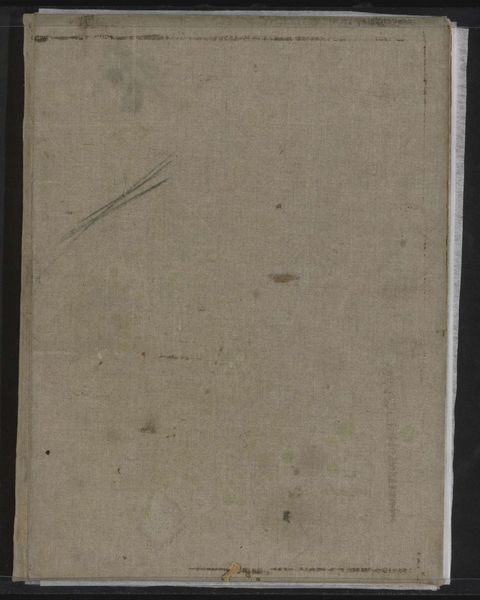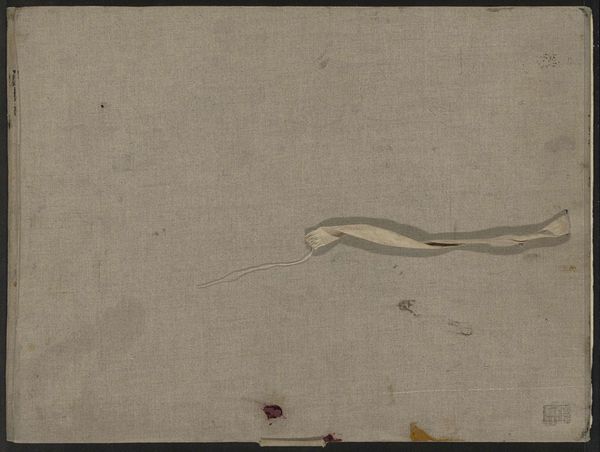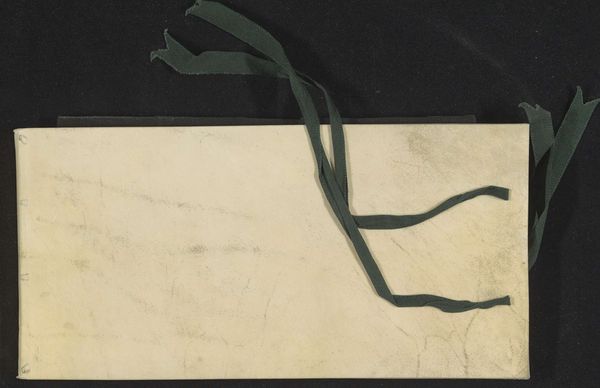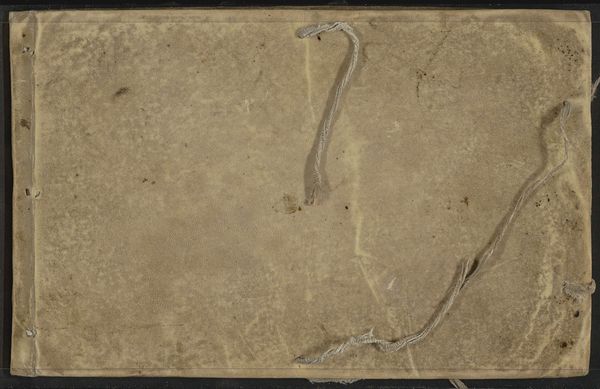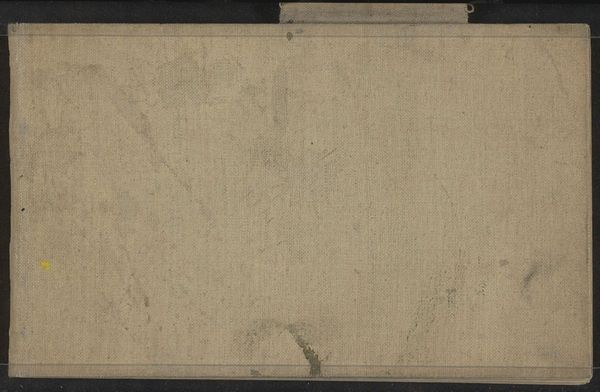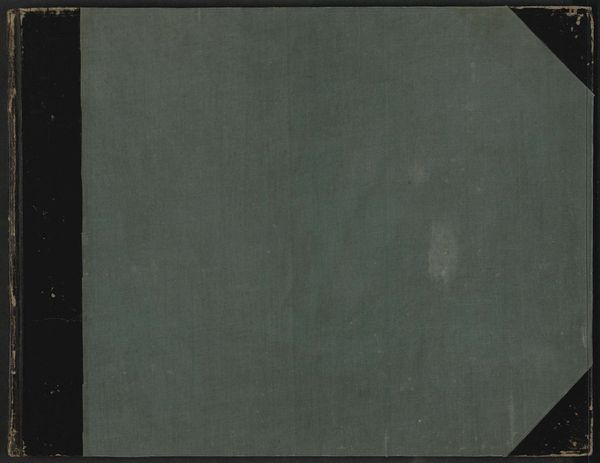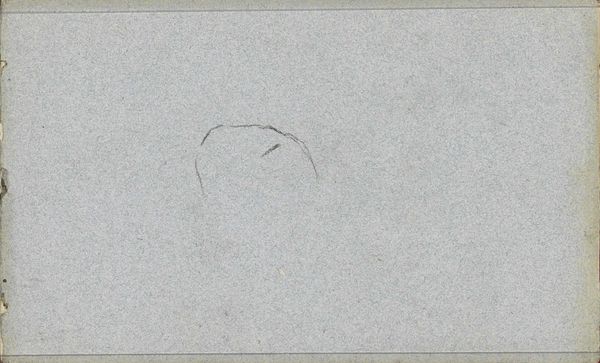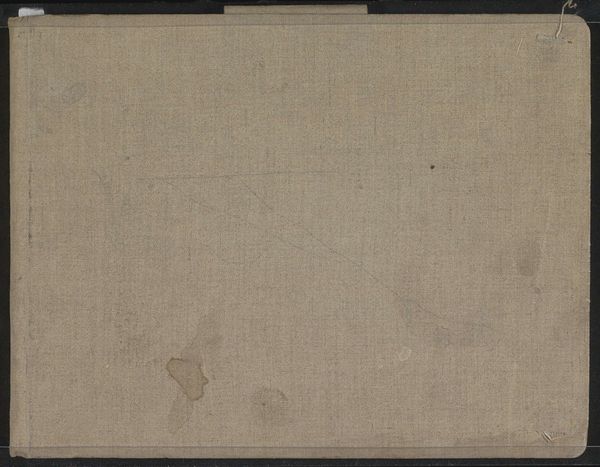
#
photo of handprinted image
#
aged paper
#
toned paper
#
homemade paper
#
ink paper printed
#
sketch book
#
personal sketchbook
#
ink colored
#
sketchbook drawing
#
sketchbook art
Dimensions: height 252 mm, width 325 mm, thickness 9 mm, width 639 mm
Copyright: Rijks Museum: Open Domain
Curator: This is “Sketchbook with 17 Leaves,” attributed to the Monogrammist DS, dating from roughly 1850 to 1950. It presents as a fascinating artifact. Editor: It feels very unassuming at first glance. I’m immediately drawn to the texture of the aged paper, hinting at its history. There's a certain quietness. Curator: Precisely. Think about the paper itself. It appears to be homemade, almost certainly incorporating found materials and subject to the limitations of what was locally accessible. This handmade quality elevates it, for me, from simple book to document. Editor: I see what you mean. Even the color has an earthy tone; the raw materiality speaks volumes about the period it was created in. And given the medium, ink, one is left to ponder: What sort of memories and concepts do those sketches preserve within those leaves? What was this individual thinking and feeling? Curator: That sense of intimacy is important. Was this a functional object, or something more personal? How was this book constructed? The fact that it’s bound suggests it was meant to last, perhaps holding sketches for larger compositions, designs for craft, or even records. It could really point towards so much. Editor: The fact that it’s being kept to this day elevates the sketchbook, even transforms it, into a symbol of personal creativity. The book now transcends mere utility, embodying memory and serving as an archive of both thought and artistry. Its unadorned character somehow amplifies its impact. Curator: Right, this directs our focus on what remains unsaid. Each stain or imperfection hints at a creative labor, or the journey in mark-making and learning that one must experience when in creative practice. And consider this within its societal context: a testament to everyday ingenuity, recycling practices and available methods when creating something meant to last. Editor: It certainly encourages deeper thought. So much can be drawn from what initially seems so straightforward. The essence lies within, hidden, just awaiting someone to notice the meaning that the artist preserved. Curator: Absolutely. A testament to a period and to human inventiveness. Editor: A memory in tangible form. Thank you.
Comments
No comments
Be the first to comment and join the conversation on the ultimate creative platform.
